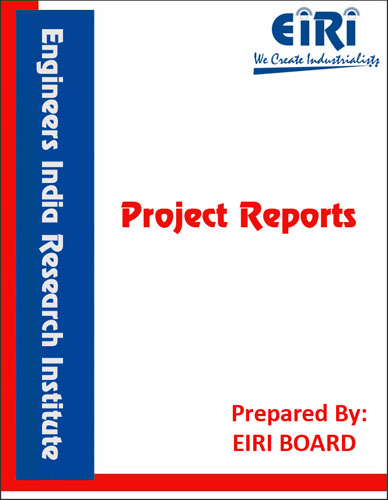The project report includes Present Market Position and Expected Future Demand, Market Size, Statistics, Trends, SWOT Analysis and Forecasts. Report provides a comprehensive analysis from industry covering detailed reporting and evaluates the position of the industry by providing insights to the SWOT analysis of the industry.
Calcium carbonate filler masterbatch is made with super fine calcium carbonate and other high quality special additives based in LLDPE carrier.
CaCO3 filler masterbatch not only cuts down production costs by replacing a part of virgin polymer during extrusion, injection and blow molding progressing but also increases ouput, improves production conditions as well as a number of physical and chemical properties of finished products.
Advantage
CaCO3 Filler Masterbatch for plastic:
Cost Benefits
Production Increase
Quality Benefits
Enviroment Protection
Durability
Extensive applications
Reasonable rates
Masterbatch (MB) is a solid or liquid additive for plastic used for coloring plastics (color masterbatch) or imparting other properties to plastics (additive masterbatch). Masterbatch is a concentrated mixture of pigments and/or additives encapsulated during a heat process into a carrier resin which is then cooled and cut into a granular shape. Masterbatch allows the processor to colour raw polymer economically during the plastics manufacturing process.
The alternatives to using masterbatches are buying a fully compounded material (which may be more expensive and less open to e.g. color variability of the product), or compounding from raw materials on site (which is prone to issues with achieving full dispersion of the colorants and additives, and prone to preparing more material than what is used for the production run). In comparison with pure pigments, masterbatches require more storage space and their lead times are longer. Another disadvantage is additional exposure of heat (“heat history”) to both the carrier and the additive; this may be important e.g. for marginally thermally stable pigments.
As masterbatches are already premixed compositions, their use alleviates the issues with the additive or colorant clumping or insufficient dispersion. The concentration of the additive in the masterbatch is much higher than in the end-use polymer, but the additive is already properly dispersed in the host resin. In a way their use is similar to uses of ferroalloys for adding alloying elements to steels.
The use of masterbatches allows the factory to keep stock of fewer grades of the polymer, and to buy cheaper natural polymer in bulk.
The masterbatches can be fairly highly concentrated (in comparison with the target composition), with high “let-down ratios”; e.g. one 25 kg bag can be used for a tonne of natural polymer. The relatively dilute nature of masterbatches (in comparison with the raw additives) allows higher accuracy in dosing small amounts of expensive components. The compact nature of the grains of solid masterbatches eliminates problems with dust, otherwise inherent for fine-grained solid additives. Solid masterbatches are also solvent-free, therefore they tend to have longer shelf life as the solvent won’t evaporate over time. The masterbatch usually contains 40-65% of the additive, but the range can be as wide as 15-80% in extreme cases.
The carrier material of the masterbatch can be based on a wax (universal carrier) or on a specific polymer, identical or compatible with the natural polymer used (polymer-specific). E.g. EVA or LDPE can be used as carriers for polyolefins and nylon, polystyrene can be used for ABS, SAN, and sometimes polycarbonates. When a carrier different than the base plastic is used, the carrier material may modify the resulting plastic’s properties; where this could be important, the carrier resin has to be specified. The usual ratio of masterbatch to the base resin is 1 to 5 percent. Several masterbatches (color and various additives) can be used together.[1] The carrier can also double as a plasticizer (common for liquid masterbatches) or a processing aid.
The machines are usually fed with premixed granules of the host polymer and the masterbatch. The final mixing then gets done in the screw and extrusion part of the machine. This is sometimes prone to adverse effects, e.g. separation of the masterbatch and the base material in the machine’s hopper. The masterbatch can be also added directly to the machine’s screw, as a free-flowing solid or in case of a liquid masterbatch by e.g. a peristaltic pump. Such use of liquid masterbatches allows highly accurate dosing and quick change of color between machine runs.
INTRODUCTION
USES AND APPLICATIONS
PROPERTIES & CHARACTERISTICS
B.I.S. SPECIFICATIONS
FILLER MASTERBATCH AND ITS AVAILABLE GRADE
TECHNICAL DATA SHEET OF CALCIUM CARBONATE FILLER
MASTER BATCH
PARTICLE SIZE OF CALCIUM CARBONATE FILLER MASTERBATCH
MECHANISM OF ADDITIVES
CALCIUM CARBONATE FILLED PP CO POLYMER COMPOUNDING COST
RAW MATERIALS
FORMULATION OF CALCIUM CARBONATE FILLER MASTERBATCH
FORMULATION OF CALCIUM CARBONATE FILLED MASTERBATCH
MANUFACTURING PROCESS OF CALCIUM CARBONATE FILLER
MASTERBATCH
PROCESS FLOW DIAGRAM
OVERVIEW OF PLASTIC INDUSTRY IN INDIA
MARKET POSITION OF MASTERBATCHES
IMPORT DATA OF FILLER MASTERBATCH
EXPORT DATA OF CALCIUM CARBONATE MASTERBATCH
PRESENT MANUFACTURERS/SUPPLIERS OF CALCIUM CARBONATE FILLER MASTERBATCHES
OTHERS FORMULATIONS
PLANT LAYOUT
SUPPLIERS OF RAW MATERIALS
SUPPLIERES OF PLANT AND MACHINERY
APPENDIX – A :
1. COST OF PLANT ECONOMICS
2. LAND & BUILDING
3. PLANT AND MACHINERY
4. FIXED CAPITAL INVESTMENT
5. RAW MATERIAL
6. SALARY AND WAGES
7. UTILITIES AND OVERHEADS
8. TOTAL WORKING CAPITAL
9. COST OF PRODUCTION
10. PROFITABILITY ANALYSIS
11. BREAK EVEN POINT
12. RESOURCES OF FINANCE
13. INTEREST CHART
14. DEPRECIATION CHART
15. CASH FLOW STATEMENT
16. PROJECTED BALANCE SHEET



